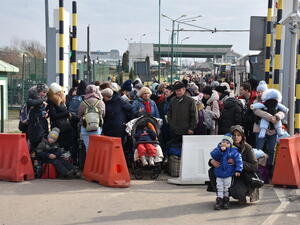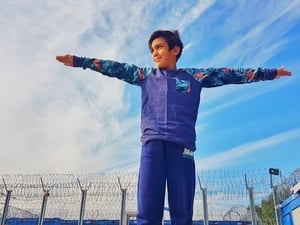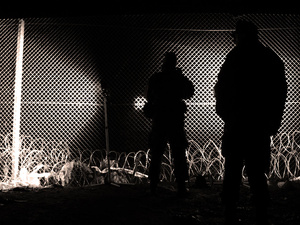Hungarian refugee crisis presented Ireland with a new challenge
Hungarian refugee crisis presented Ireland with a new challenge

Former Hungarian refugee Anna Lehota returns to visit the Knocklisheen camp with a Catholic nun who used to teach there.
DUBLIN, Ireland, November 6 (UNHCR) - The Hungarian refugee crisis of 1956 was the first major test for the UN refugee agency as some 200,000 people fled the central European nation. It also provided a tough new challenge for Ireland, one of the 37 nations to accept Hungarians for resettlement.
When Soviet tanks rolled into Budapest to crush the Hungarian uprising against the country's communist regime and its Kremlin masters, Ireland was an economically deprived country on the fringes of Europe. Its people had been heading overseas in droves for decades, seeking a better future in countries like Australia, Canada, the United Kingdom and the United States.
But the relatively young republic was quick to answer the call when UNHCR and its partners sought help in resettling the tens of thousands of Hungarians who had fled overseas to escape the Soviet advance. In its first foray into the resettlement of refugees, Ireland accepted 541 Hungarians amid widespread domestic support.
On their arrival in Ireland, the refugees were accommodated by the Irish Red Cross in a disused army barracks at Knocklisheen in the west of the country. Despite all the good intentions, problems soon arose and in the end most of the refugees left for Canada in 1957 and 1958 with the help of UNHCR.
Language proved to be a major barrier, and few supports for integration existed. In 1957, some refugees went on hunger strike in protest at a lack of work and their poor living conditions. But while it was a difficult learning curve for the Irish authorities, some refugees made a go of things in Ireland.
"Knocklisheen was a milestone in our lives; it was an end and a beginning. The end of our dreams, a dream of freedom, democracy, a healthy life in our own country, terminated by Soviet guns and tanks. A new beginning, the beginning of an emigrants life, living in a strange country, homeless, jobless, not speaking the language, and wondering what will happen next," recalled former camp resident Anna Letoha.
"Thank God Ireland and the Irish people welcomed us with open arms," the 75-year-old added during a recent ceremony at Knocklisheen to mark the 50th anniversary of the refugees' arrival in Ireland following the October 23, 1956 uprising in Budapest.
Letoha decided to settle in Ireland with her husband and four-year-old daughter, finding a job and acquiring Irish citizenship. She has returned to Hungary several times since the fall of communism more than a decade ago, but feels Ireland is now home.
While Letoha is among the few that stayed in Ireland, other Hungarians who migrated to North America feel a debt of gratitude to Ireland, which has advanced economically and socially in leaps and bounds since 1956 and is now seen as a highly attractive resettlement destination by refugees.
"In Austria, we were desperate. Rumours were flying around that the Soviets would cross the border and haul us all back.... In the Austrian camp, several countries maintained offices, but said they would not take any more refugees," said Ted Vanya, who lives in the Canadian city of Toronto.
Then his father-in-law spotted a notice pinned to a tree saying that Ireland would admit refugees. . "It said that they preferred Catholic families, promised work and promised assistance to leave Ireland for other countries if desired," he added in a an e-mail message from Canada.
Elation at resettlement soon turned to disillusion. The Knocklisheen camp was not suitable for families and Vanya said that "very shortly it became obvious that the Irish economy could not supply work and a permanent home for us."
He and his family moved to Canada in August 1957 and Vanya carved out a successful career as a papermill chemist and also lectured at the University of Toronto. But the former refugee remains impressed by Irish hospitality and said he would never forget the kindness and generosity he received, without which he believes he could never have succeeded.
Knocklisheen has also moved on; today it is a state-of-the-art reception centre with a playground, crèche, computer room, clinic and large modern kitchen staffed by professional caterers. It can house up to 450 asylum seekers.
Ireland is one of only 17 countries round the world with a resettlement programme and last year raised its resettlement quota from about 40 individuals per year to 200. And it all began with the 541 Hungarian refugees welcomed to Irish shores half-a-century ago.








